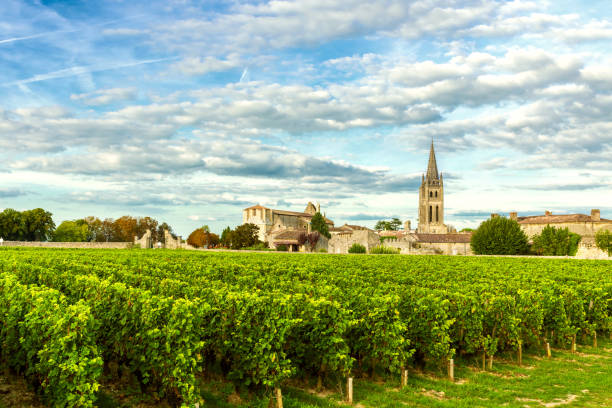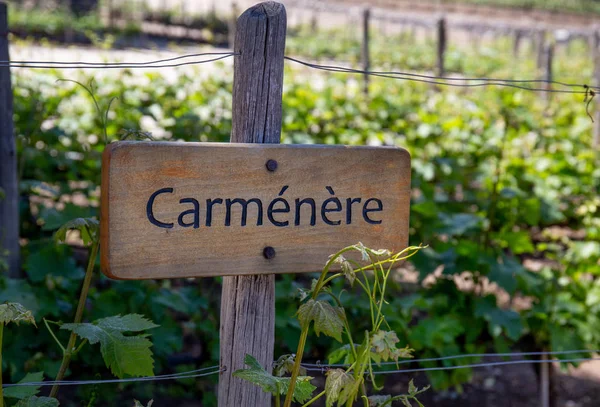For some fans of red wine, Cabernet Sauvignon is the complete package: aromatics, structure, flavor profile, tannin, acidity, and most of all, the promise of long life. Others would happily apply those attributes to Syrah.
All of that appeals to me, but so does Merlot. Think about it. Merlot has the acidity and stiff backbone found in the best Cabernet Sauvignon. As for fruit, Merlot has plenty of it, without being overblown or jammy. Briefly stated, Merlot has it all, the fruit of Syrah and the structure of Cabernet Sauvignon.
Merlot attracts fans for its different expressions captured in the scores of Merlots from around the world. This is what English wine writer, Oz Clarke, said about Cabernet's partner: "Merlot tastes of all sorts of things: it can be anything you want, from light and juicy through Pinot Noir-silky to Cabernet-oaky and extracted."
Ok, so Clarke says "po-tot-toe" and I say "po-tay-toe." Either way, Merlot has what it takes for a red wine to be a good match with food, whether it comes off your backyard grill, has a place on the dining room table, or is on the wine list at your favorite restaurant.
Still, Clarke's comment sounds like Merlot is a chameleon, when he suggests that Merlot can be anything you want. Shape shifting or not, no matter where it's from, Merlot's core identity is the same, even as it takes on characteristics of the local terroir.
If all that sounds like smoke and mirrors to you, then here's a closer look at some noteworthy and stylistically different Merlots from France, Italy, California, Washington state, Argentina, Chile, Australia, New Zealand and South Africa.
France: Merlot is rarely bottled as a varietal in France, except for the popularly-priced Merlots from the Mediterranean regions in the south of France. Languedoc and Provence Merlots are soft, fruity, mildly tannic and very drinkable.
 |
| Bordeaux vineyard Getty image |
In Bordeaux, Merlot is famous for its role in the classic Bordeaux blend, with Cabernet Sauvignon and Cabernet Franc. And French Merlot gives structure to Pomerol and St. Emilion, two Bordeaux right bank areas that rely on Cabernet Franc. It's in Pomerol that Merlot, not Cabernet Sauvignon, helps Cabernet Franc round out the blend.
Italy: A balanced, smoother Italian red wine is made when lower-acid Merlot is blended with high-acid Sangiovese, in Tuscany, Umbria and Veneto. Northern Italian Merlot is leaner than its French cousin, but still offers ripe black cherry flavors. Merlot is growing in popularity in the Maremma part of Tuscany, notably Bolgheri. Despite Merlot's modest rise in Italy, Sangiovese is still king, and that assigns Merlot mainly as a blending component.
California: Whether it's part of a blend, or as a varietal, Merlot is popular up and down the state. Napa's Duckhorn is credited with bringing Merlot forward as a varietal. Merlot quickly became better known, both as a blending partner with Cabernet Sauvignon and Cabernet Franc and as a varietal.
Early California Merlot tended to be green and vegetative, leaning to dill. Growers and winemakers worked on the problem and, in time, varietal Merlots began to show signature ripe berry aromas and flavors. The state's top Merlots come from Northern California, notably Napa Valley and Sonoma County. Merlot also grows good in Amador and the coastal part of Monterey County.
Some California Merlot has been criticized as over the top and jammy. What sold a lot of people on Merlot was the recognition that Merlot is a more generous wine than Cabernet Sauvignon. Where young Cabernet Sauvignon can be edgy and angular, with harder tannin, Merlot's softer edges and abundant fruit gives the wine a more approachable taste.
For years, winemakers have been pleading with consumers to age their red wine, but marketing statistics consistently show that Cabernet and Merlot is drunk too soon. Most Merlot in today's market is not meant for cellaring, exceptions are top California bottlings and Pomerol like Chateau Petrus.
Washington: If you were to pick the three red wines the Evergreen State is best known for, it would be Cabernet Sauvignon, Merlot and Syrah. In fact, Merlot is Washington's second-most planted red variety. Woodward Canyon Winery, in Walla Walla, was one of the first to show Merlot's potential in the state.
Today, growers are dealing with the effects of climate change and rising temperatures. While cooler sites are being considered, Merlot is still a good bet from parts of Walla Walla, including Seven Hills and Red Mountain, Rattlesnake Hills in the Yakima Valley, and Horse Heaven Hills.
Argentina and Chile: Malbec is the Bordeaux variety that best defines Argentine red wine. Cabernet Sauvignon, Cabernet Franc are on the rise, but Merlot has yet to catch on, even in Mendoza.

Merlot has an identity problem in Chile. For years, a lot of vines have been identified as Carmenere, an ancient Bordeaux grape that somehow found its way to Chile. Vine identification is on-going, as Chilean wineries sell both Carmenere and Merlot, while blending both varieties with Cabernet Sauvignon.
Australia and New Zealand: Generalizing about Australian wine is complicated, because of the country's size and viticultural diversity. But wherever you find Cabernet Sauvignon, you'll find Merlot. Favored places are in the states of South Australia, Western Australia, New South Wales and Tasmania.
Hawke's Bay, on the east side of New Zealand's north island, is Merlot country, especially in the vineyard zone known as Gimblett Gravels. A little Merlot is also found on the South Island regions of Canterbury and Waipara Valley.
South Africa: In a broad area known as the Cape Winelands, there are no fewer than 18 areas, the best known being Stellenbosch, Paarl and Franschhoek. Merlot, the third most planted wine grape in South Africa, is favored in these areas. Although varietal Merlot is popular, the variety is most often blended with Cabernet Sauvignon.
When the film "Sideways" was released twenty years ago, Merlot was dissed by the main character, causing U.S. Merlot sales to take a beating, with some market observers predicting doom. There was a temporary dip in sales, but demand for Merlot bounced back and today, Merlot is more popular than ever.
Omission: In the July 26 overview of Pacific Northwest wines, the Yakima Valley, Washington's first AVA, was unintentionally left out. Yakima Valley is home to such important sub-AVAs as Red Mountain, as well as noted wineries like, Hogue Cellars, Col Solare and Kiona Vineyards.
Next post: The Douro
Write to me at boydvino707@gmail.com



No comments:
Post a Comment
Note: Only a member of this blog may post a comment.